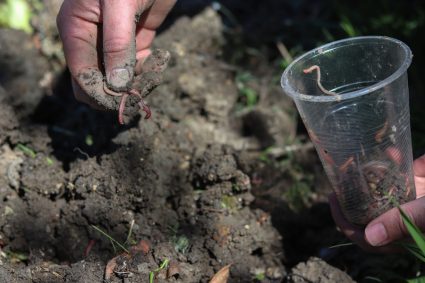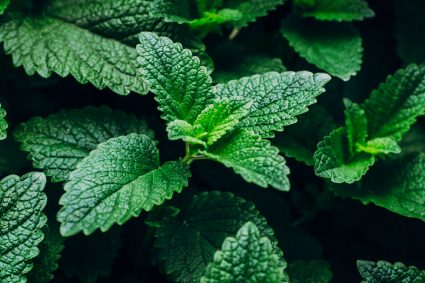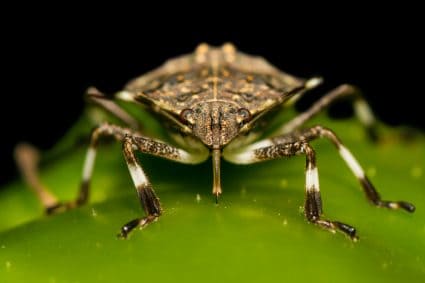
My compost bin had a nasty surprise waiting for me when I opened its lid a few days ago.
Hundreds of wriggly maggots! It wasn’t a sight to behold, even for someone like me who doesn’t mind seeing insects and lizards in my yard.
It was certainly not a daily encounter I planned on putting up with in the long run, either.
So I put my research hat on and find ways to keep maggots out of my compost bin.
The great news is that maggots are common dwellers in compost bins worldwide, and there are many ways to keep them away.
I will start by sharing what maggots are, what attracts them to compost bins, their business in compost bins, and how to keep maggots out of compost bins.
Here’s what I learned about what maggots are, what they were doing in my compost bin, including whether they were helping my cause and what I did to get rid of them:
What Are Maggots Found in Compost Bins?
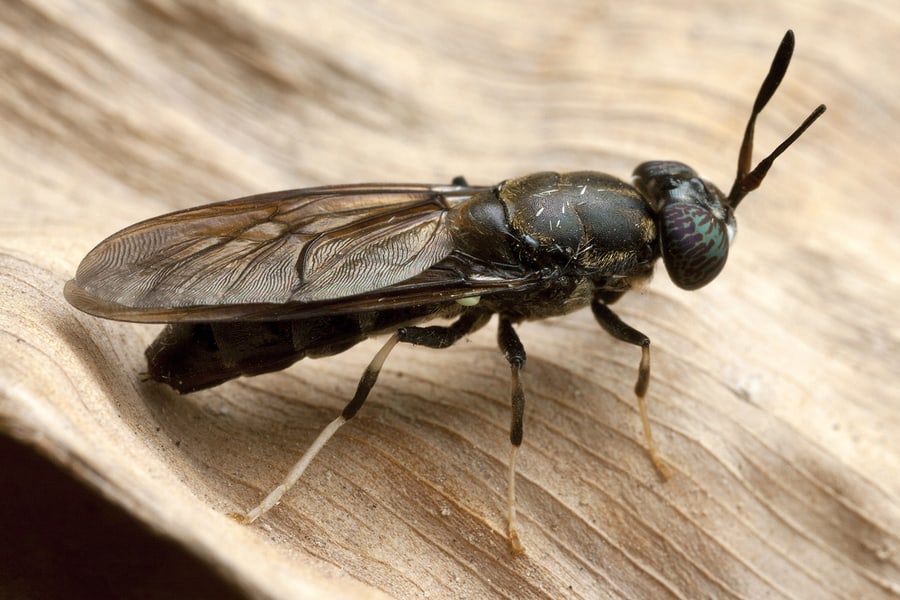
The off-white colored, torpedo-shaped unpleasant livings things, aka maggots,
I found in my compost bin were most likely to be the larvae of the Black Soldier Fly or, somewhat less likely, the common housefly.
The larvae of both these flies grow up to about half an inch long.
The color of maggots depends on their diet. Although they are primarily off-white or grey, don’t be surprised to spot a few darker ones.
The larvae will feed on the nitrogen-rich food in the compost bin, transform into Black Soldier Flies, and fly out in the end.
BSFs are considered one of the most beneficial flies for many ecological reasons. As a result, they are not categorized as a pest.
The Black Soldier Fly (Hermetia iIlucens) usually reaches 7/8-inch long upon maturing. They prefer bright, sunlit areas and rest on structures or vegetation.
They aren’t strong fliers and spend most of their time resting. Their bodies are black with dusky wings.
The mature BSF does not have functional mouthparts. As a result, they can’t bite or transmit diseases. Black Soldier Flies also help control the housefly and fruit fly populations.
Overall, it takes around 36 days for a BSF to reach maturity from the time the egg is laid.
What Attracts Black Soldier Flies To Compost Bins?
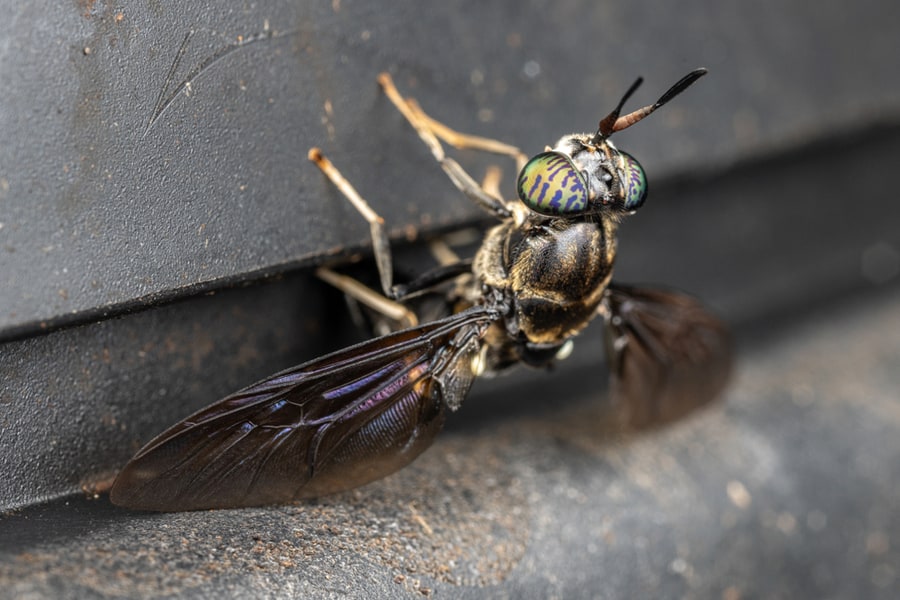
The female Black Solider Fly searches for warm, moist, nitrogen-rich environments before laying eggs.
Food waste such as meat, bones, and animal manure is high in nitrogen that larvae feed on.
Each female BSF lays around 500 eggs, producing larvae or maggots from four days to a few weeks.
Compost bins with lots of “greens” and far few “browns” also provide attractive breeding grounds for the Black Soldier Fly.
Since most green bins are warm and moist, it’s the free food the BSF will more likely consider before laying her precious eggs.
Are Maggots Good for Composting?
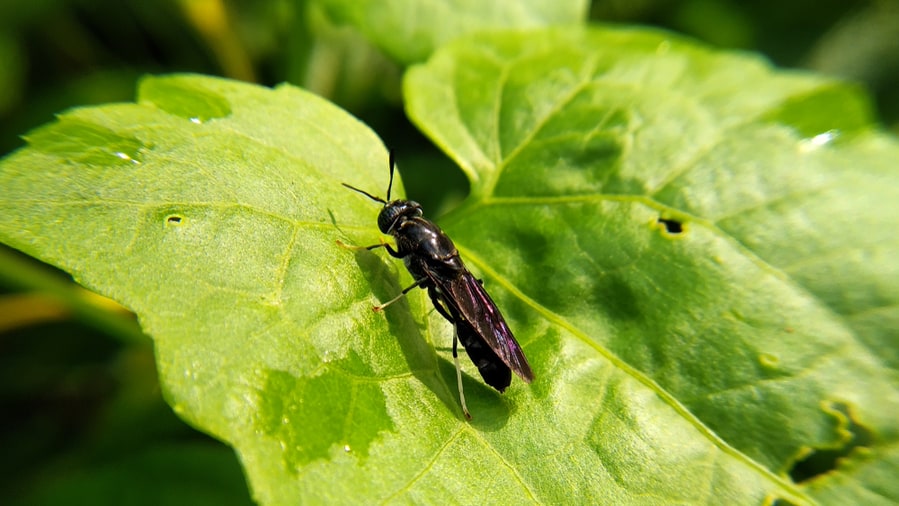
The world of composting is divided around this topic.
The Black Solider Fly is beneficial from a mere composting viewpoint since helping the fast decomposition of waste.
On the other hand, their larvae have a huge appetite and feast on most of the food in the compost bin.
As a result, beneficial worms end up starving, reducing the amount of nutrient-rich worm byproducts from the final compost.
Therefore, the quality of compost from green bins with many maggots is questionable since they lack the proper balance of nutrients.
Using such compost for gardening can introduce undesirable micro-organisms to the soil.
Finally, seeing hundreds of wiggling maggots with every visit to the compost bin can be off-putting to many, including me.
Ways To Get Rid of Maggots in Compost Bins
I found many ways to avoid having fly larvae in my compost bucket. However, since I started after they had already arrived.
I had to get my hands dirty at the beginning.
It was just a matter of preventing flies, especially Black Soldier Flies, from choosing my compost bin to lay their eggs, which I managed with relative ease.
1. Use Some Vinegar
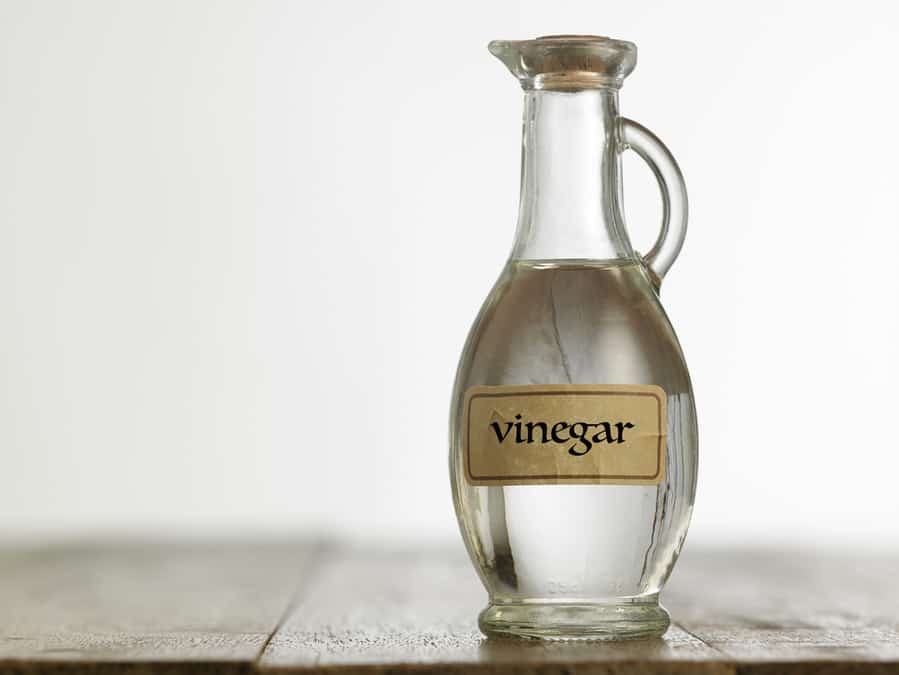
The high acid content in the vinegar helps create an unpleasant environment for maggots. I had some success spraying the larvae with 5% household white vinegar.
I also found it helpful to keep sprinkling vinegar to keep fly larvae out of the compost bin in the long run.
Directly sprinkle one tablespoon of household white vinegar for every 20 pounds of compost to make the bin unappealing for laying eggs.
2. Manually Remove Any Existing Larvae
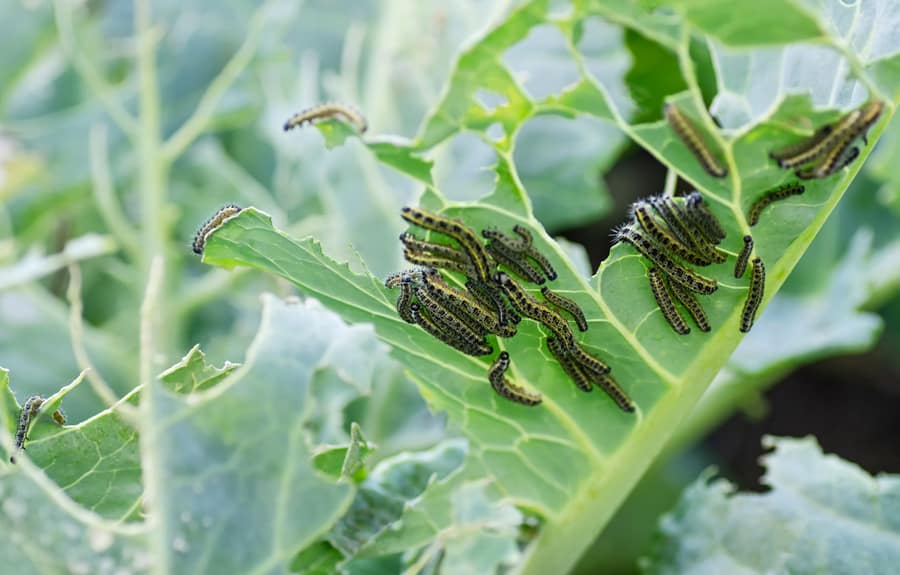
Spraying vinegar didn’t entirely stop the maggot party in my compost bin, so I had to get my hands dirty.
Well, I tried to manually remove the fly larvae, which I managed with the help of rubber gloves and a thin strip of metal.
The best way to dispose of them is to put them in a container and leave it somewhere birds hang out for them to feed on.
Direct contact with decomposing material or living things in the compost bin can be harmful, so always wear rubber gloves when handling anything from the compost pile.
3. Maintain a Balanced Compost Bucket
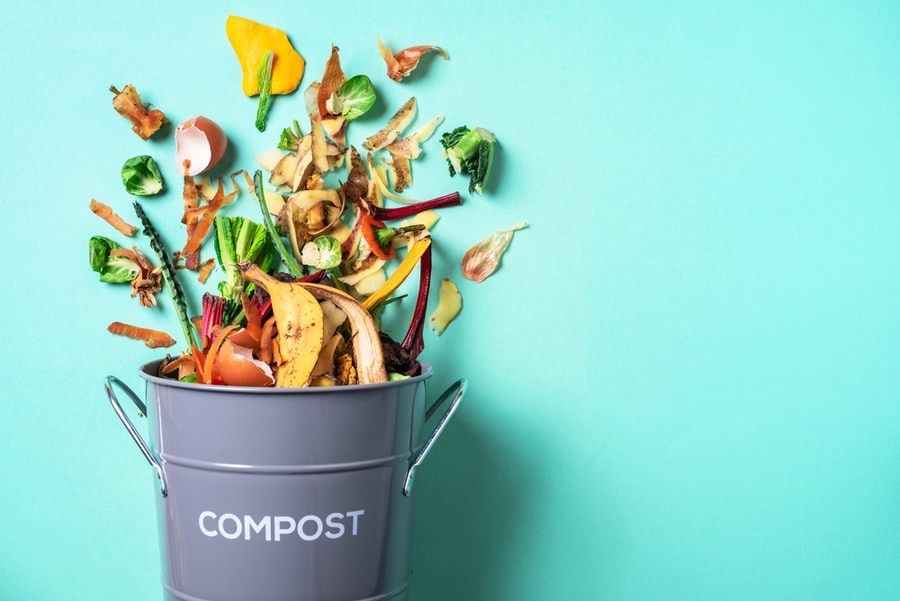
Imbalances in the compost are one of the main reasons for maggot infestations.
Different types of waste need to be balanced for compost to thrive, so adding more from a kind of waste invites trouble.
As far as fly larvae are concerned, I had to be careful not to add too much nitrogen-rich matter, such as food and animal waste.
Mama Black Soldier Flies pick places with plenty of food for their babies, and there is nothing better than an unbalanced compost pile with lots of nitrogen-based waste.
All I had to stop them from picking my compost bin to lay their eggs was to maintain a nice balance by adding equal quantities of nitrogen and carbon sources such as dry leaves, grass cuttings, shredded paper, and other “brown” waste.
A batch of waste going into a compost pile should contain three key ingredients: brown matter, green matter, and water.
Most composting experts recommend a ratio of 1:1 or 2:1 of brown vs. green matter.
Anything woody and dry falls under brown matter, including twigs, sawdust, and cardboard.
Brown matter is rich in carbon, providing food for beneficial microbes in the compost pile. Brown material also enhances airflow within the compost bin.
On the other hand, green matter refers to natural waste such as fruit and vegetable scraps, grass cuttings, and coffee grounds.
They are high in nitrogen and supply moisture and nutrients to the compost pile.
Although green material provides moisture to the bank, adding some water to the pile might be necessary, especially during dry weather.
The fact that I was dealing with maggots meant that my compost pile needed more brown material. So I added more brown stuff to try and even things out.
4. Learn What To Compost and What Not To
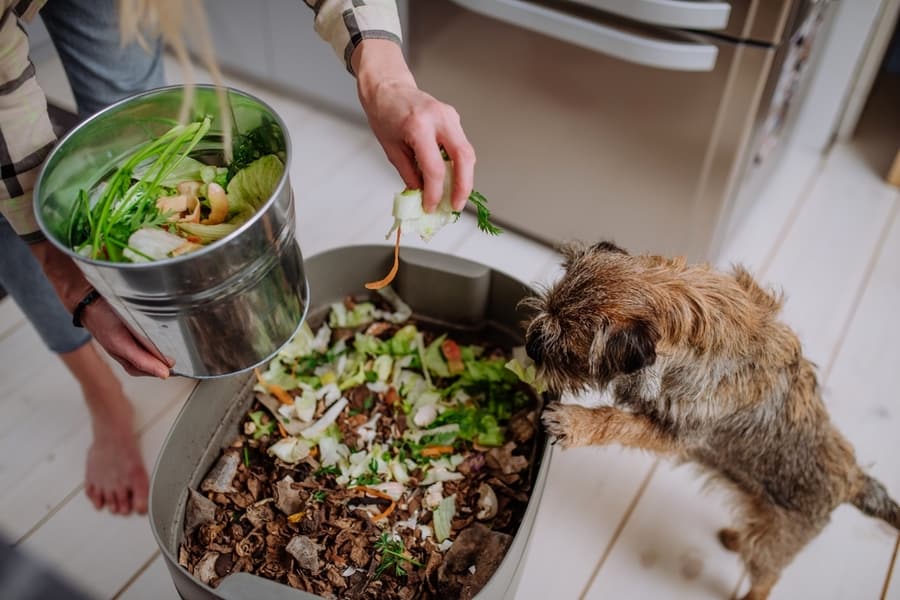
Finding hundreds of fly larvae was a telltale sign that I was putting some wrong things in my compost.
As a result, I had to learn what to throw in my green bin and what not to do so that I won’t have to deal with a similar problem again.
Compostable Waste
The following types of waste are great for your compost bin.
However, remember not to go overboard with any particular kind of a waste to maintain an ideal balance.
- Cardboard
- Coffee grounds and tea leaves
- Cotton
- Cow, horse, goat, and chicken manure
- Crushed eggshells
- Fruit and vegetable scraps
- Grass cuttings and thin plant prunings
- Hair, fur, and wool
- Leaves, hay, and straw
- Lint from natural fabrics and vacuum cleaners
- Nutshells
- Paper towels
- Sawdust, wood chips, wine corks, toothpicks, etc.
- Shredded twigs
- Stale Bread
Non-Compostable Waste
It’s better to avoid putting these types of waste in the compost bucket to avoid tipping its balance and disrupting the composting process.
- Baked goods and cooked grains
- Chemically-treated plant matter
- Citrus fruit peels
- Coffee pods and tea bags (unless compostable)
- Cool ash
- Dairy products
- Dog or cat poo
- Diapers and hygiene products
- Diseased plants
- Glossy or coated paper
- Leather goods
- Meat, fish, and bones
- Noxious weeds
- Oils and greasy food
- Onions and garlic scraps
- Stickers on fruits and veggies
- Synthetic fabric
- Toxic plants
- Treated wood
- Wax paper
5. Layering the Compost Pile
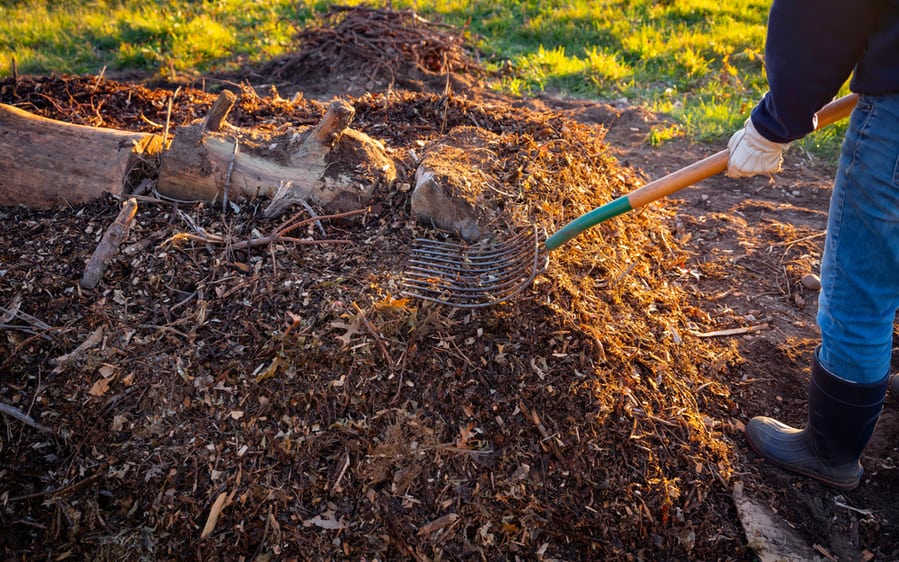
If you are working on a new compost pile, add a five or six-inch layer of brown matter.
Then, add a layer of green matter with nitrogen-rich food scraps and manure. Finally, cover the nitrogen-rich layer with a good layer of brown material again.
I made sure that I added a two to four-inch layer of brown matter every time I put food scraps or manure in my compost bucket.
That way, I was minimizing any risk of attracting flies.
Remember not to forget about the balance of the compost pile when layering it. Depending on your preferred composition, there should be the right amounts of green and brown material.
6. Turn the Compost Pile
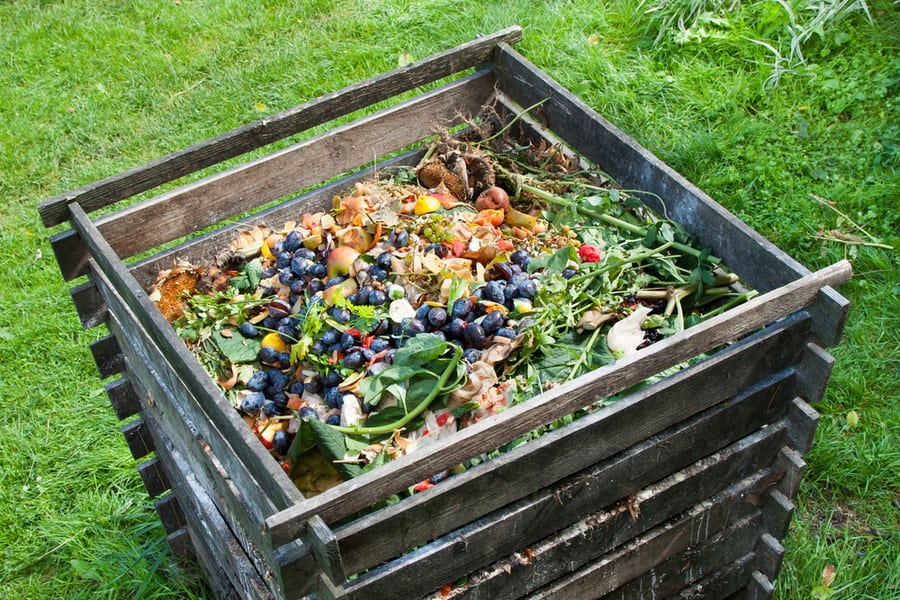
Momma flies prefer to have their eggs undisturbed, so turning the compost pile every three to four weeks makes it an undesirable spot for egg-laying.
Turning the compost pile also quickens the decomposition process by bringing more air to the microbes.
However, give it at least two to three weeks to work its magic before turning the pile again.
7. Avoid Overwatering
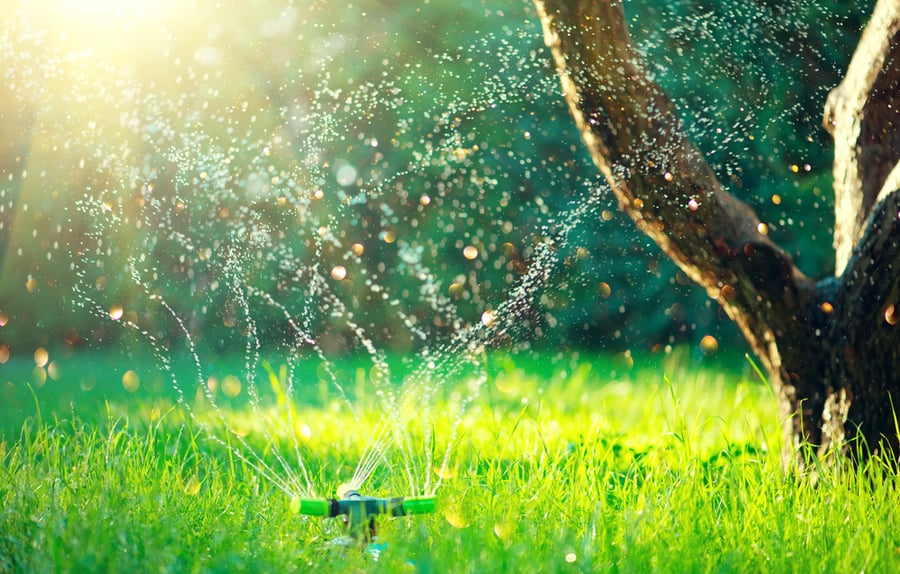
An excellent compost pile should be moist. However, that does not mean it should be saturated or sitting in water.
Adding too much water creates a foul-smelling compost bin, attracting flies. Therefore, be careful when watering and avoid overdoing it.
8. Add Citrus Fruits

Citrus fruits are acidic, so adding them pushes the pH scale into the acidic area, creating an unfavorable environment for fly larvae.
I added all kinds of citrus peelings and scraps into the compost bin from oranges, mandarin, lemon, and lime.
Remember not to add citrus fruits into the compost pile without mixing them with other materials if there aren’t any larvae.
Citrus fruits create an unfriendly environment for worms and microorganisms that are beneficial for composting, so adding them should be done carefully.
9. Add Pine Needles

Pine needles are another acidic substance that can help repel maggots from compost bins. However, I had to be careful not to add too much of this stuff since they take a long time to break down.
10. Using Agricultural Lime (Dolomite)
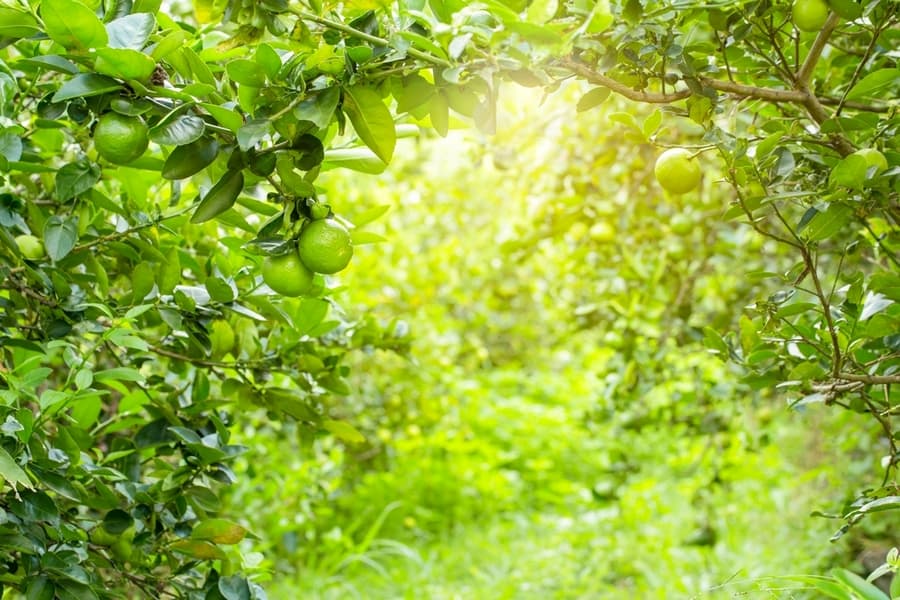
Dolomite is an alkaline substance, the opposite of acidic. However, maggots despise it.
Once again, it’s essential to keep the proper pH balance in a compost pile at all times, so be careful not to add too much agricultural lime.
One cup of lime for every 25 cubic feet of compost is an excellent recipe to eliminate fly larvae.
11. Limit Openings in the Compost Bin
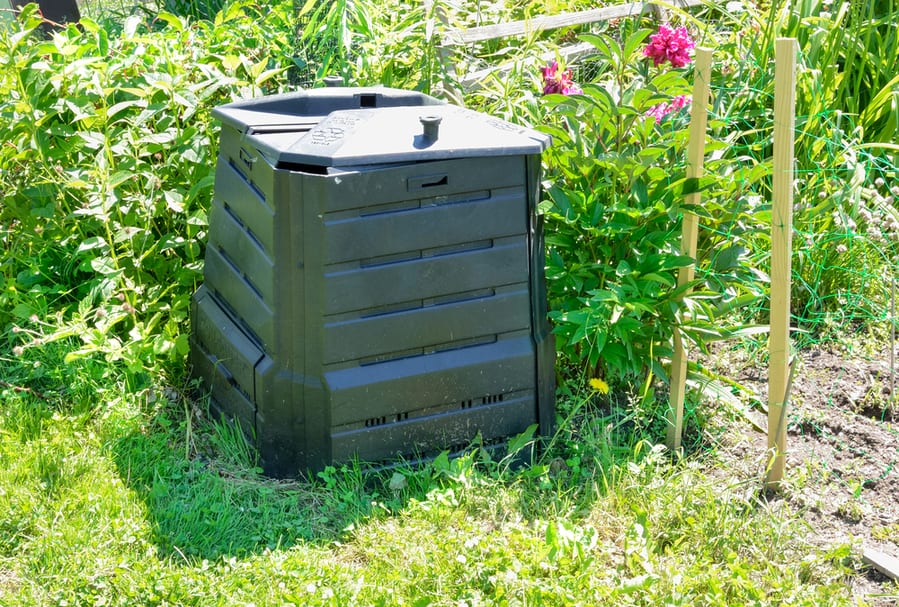
A happy compost pile needs plenty of airflows.
However, that does not mean the bin should have huge holes that are big enough for flies to come and go.
Unfortunately, my compost bucket had ventilation holes that were big enough for the flies, so I had to cover the bin thoroughly with a mesh screen and tape the edges of the screen to the bucket using waterproof tape.
Additionally, inspect the compost bin for holes and always close the lid properly.
12. Hanging Fly Traps
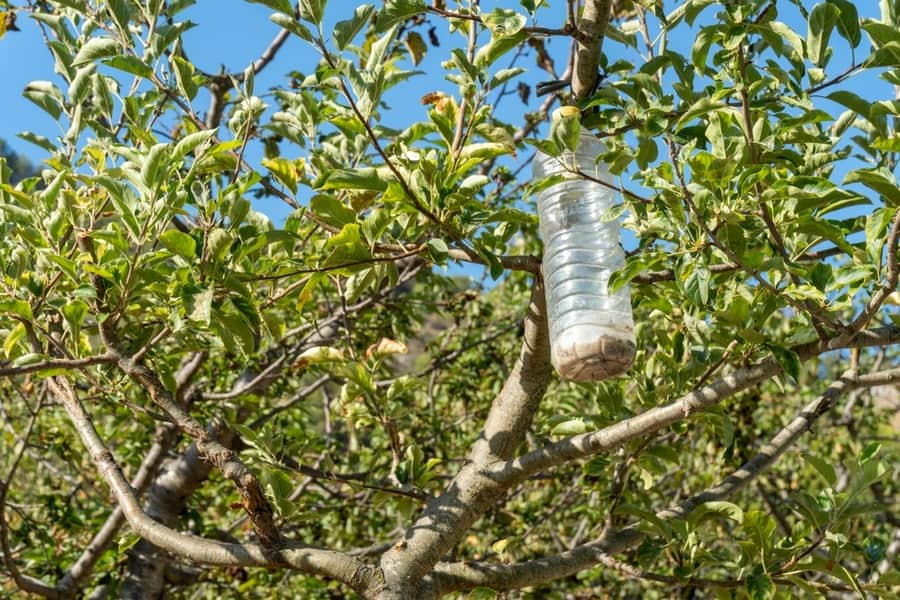
The fact I had maggots in my compost bin meant that flies had been around it before.
I didn’t want to take any chances with that happening again, so I hung some fly strips and traps in the surrounding area to try and draw flies away from the compost bin.
This was especially helpful during warm and wet weather.
13. Trying a Sealed Compost Bin
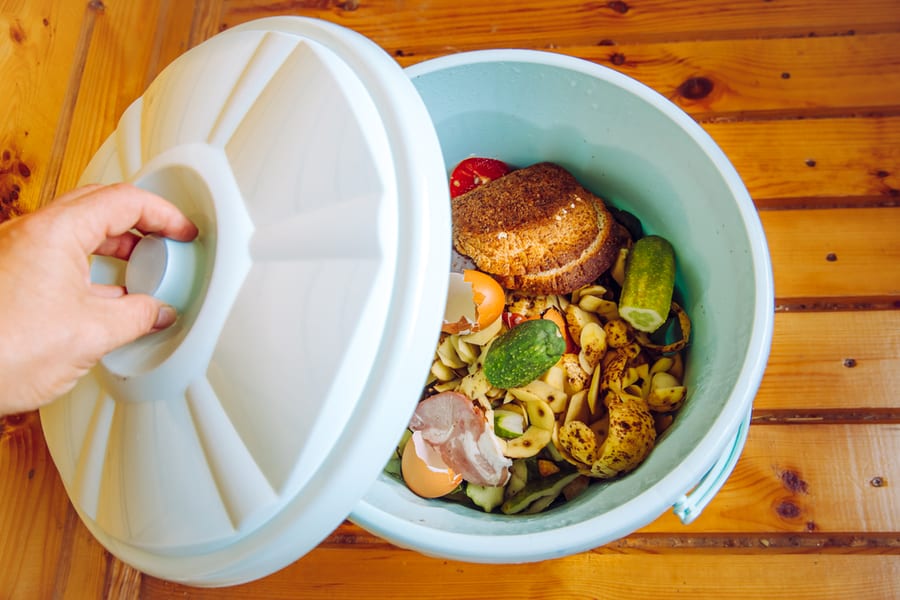
Here’s a viable option if none of the methods above manages to get rid of the larvae. A close compost bin is the most effective for keeping maggot infestations at bay.
However, managing a closed compost bucket requires more work. It needs to be turned frequently to provide enough airflow.
The bottom of the pile can be waterlogged if the water doesn’t drain out properly, making the bin smell, which will attract flies.
Therefore, watering should be done carefully with proper layering and regular turning of the pile.
Conclusion
Finding maggots wasn’t a highlight of my composting journey.
However, I’m happy about how I managed to keep them from invading my green bin again.
There are many excellent ways to keep maggots out of compost bins, and they require a better understanding of how composting works and maintaining a healthy compost pile.
Some of the methods I used also included adding certain materials and playing with the pH balance of the compost pile.
The idea was to create an undesirable breeding place for the Black Soldier Fly and avoid attracting them into the compost bin.
Frequently Asked Questions
How Do I Prevent Maggots in My Compost?
Preventing maggots or fly larvae in a compost pile comes down to maintaining the pile in ways to prevent it from being an attractive egg-laying environment for flies, especially the Black Soldier Flies.
Why Is My Compost Full of Maggots?
Maggots in a compost bin mean that flies, especially Black Soldier Flies, have laid their eggs in it, giving birth to many fly larvae later.
This is no reason to panic since there are many ways to repel maggots and stop attracting flies into a compost bin.
Is It OK for Maggots To Be in My Compost?
Composting experts are divided on this topic. Some believe flies and larvae bring beneficial bacteria and nutrients to a compost pile.
In contrast, others believe the presence of hungry maggots risks the well-being of worms, which play a vital role in helping produce nutrient-rich compost.
Generally, it is okay to have a few maggots in a compost bin as long as they can be tolerated.

